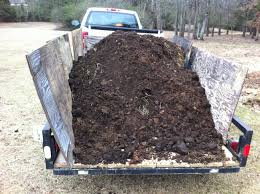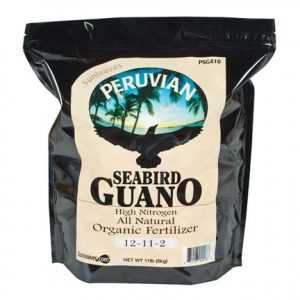How to Prepare Your Soil
The single most important element of your allotment or garden is how you prepare your soil
Where to Start ?
- Planting a garden involves more than putting seeds in the ground.
- Preparing the seedbed, selecting seeds, and
- deciding when to plant come first.
Will you sow seeds – and then thin them – or will you try trans-planting?
(for example do you start them in a seed-tray indoors, and then move them when grown, or do you sow them direct outside)
This decision, among others, is up to the individual gardener, where you live (temperature, danger of frost, etc.), how much time you have, etc.
Your Soil…..
Before planting any seeds you need to prepare the soil.
What you need to do will depend on the type of soil – clay, chalky, dry, wet….
In most cases you will need to cultivate properly, adding organic matter, and maintaining soil fertility. Early autumn is the best time to begin preparing the soil. Remove sticks, stones, and other debris. Also remove plant debris that may harbour insects and diseases. Pest-free plant debris can be tilled into the soil. A level site can be dug over in the autumn without danger of soil erosion. The freezing and thawing action in the spring will break up the clods.
When breaking ground in the spring, do not work the ground when the soil is wet. If worked when too moist, heavy soils become hard, compacted, and will limit growth for the entire season. If a handful of the soil can be pressed into a ball, delay until it is drier.
Which compost or manure to use is very much an individual choice – do you go organic or not ?
Organic Fertilizers or Inorganic ?
There are advantages and disadvantages to organic and inorganic fertilizers.
Advantages of organic…
The major benefit of organic fertilizers is that they work slowly. They need to be broken down by soil organisms in order for their nutrients to be released and that takes time. Because they work slowly, nothing is wasted. They are consumed as they are released, unlike chemical fertilizers, which are released immediately into the soil.
Organic fertilizers carry some other perks. Because they contain organic material, they improve the soil’s structure or its “workability.” Soil that’s been fertilized with organic matter is easier to work and allows more air to get to plant roots. The organic material also permits soil to hold water longer. Finally, the addition of organic substances used in fertilizer increases the bacterial and fungal activity in the soil. Overall, organic fertilizer not only helps your plants, it improves your soil.
Organic fertilizers’ biggest strengths are also their weakness. Because organic fertilizer’s nutrients are slowly released into the soil, they are not immediately available to plants. If there is an immediate need for nutrients, you may want to consider liquid fertilizers or foliar applications.
Advantages of inorganic…
Inorganic fertilizers work fast, which can be a boon or a bane depending on your garden’s needs. Another disadvantage of inorganic fertilizer is that over watering or rain can push the chemicals beneath roots where they won’t do any good. Inorganic fertilizers, because they are so rich, can easily “burn” roots or create a toxic concentration of salts if over-applied.
Although organic fertilizers do carry many benefits, especially over time, plants often do not know the difference. Your zucchini plant doesn’t care if the nitrogen it’s feeding on came from a compost pile or a test tube.
What are Organic Fertilizers ?
Here’s a list of some organic fertilizers you can encounter
The obvious ones (used most often)
Manures for the garden come from cow, sheep, poultry and horses. Pretty self-explanatory. Manure is known as a “complete” fertilizer; it has a lot of organic matter, but is low in nutrients. Manures are most valuable as organic soil amendments and mulches.
Especially if you have an allotment you will often be able to get horse manure delivered for free but beware of using fresh manure as a fertilizer because it can burn plants.
Or why not try…
Bat guano or seabird guano. (available from specialist garden centres)
Bat guano is rich in soluble nitrogen, phosphorous and trace elements. Usually powdery, bat guano may be used any time of year as a top dressing or diluted in a tea and used as a foliar spray.
South American seabird guano is among the world’s best. It;s very high in nitrogen, phosphorous and other nutrients.
Proper Use
To ensure proper use, first figure out what your plants’ nutrient needs are. This is based on soil conditions, previous fertilizers used and the type of plants that you are growing. The best way to find out what you need to add to the soil is to test and determine what’s in your soil.
Also, know the labeling system that the industry has standardized on. Each label will list N-P-K numbers and in that order. The N stands for nitrogen, the P for phosphorus and the K for potassium. An organic fertilizer will generally have an NPK ratio that adds up to less than 15 and with no individual number greater than thirteen. If you see big numbers on the label, chances are it’s chemical rather than organic. A “6-12-0” fertilizer contains 6 percent nitrogen, 12 percent phosphate and 0 percent potash. A hundred pound bag of this material would contain six pounds of nitrogen (100 x .96), 12 pounds of phosphate (11 x .12) and no potash.
Lower numbers do not mean low grade. In the case of organic fertilizers it just means that the nutrients aren’t immediately available, but are released slowly over time. Note: It is our opinion that some fertilizer companies use high NPK ratios purely for marketing purposes. The “more must be better” philosophy is alive and well in the industry…but does a lawn really require a fertilizer that consists of 60% nitrogen?
Fertilizers with ingredient lines that include words like ammonium, muriate, urea, nitrate, phosphoric, or super phosphate usually are chemical-based rather than an organic fertilizer.
Also be wary of fertilizers that contain cottonseed meal and leather tankage. These aren’t bad in and of themselves, but they are frequently contaminated with harmful residues.
Using Fertilizers
Whatever fertilizer you buy, follow the application instructions including how much to apply, when and where.
When using organic fertilizers, which are mostly slow-release materials, the timing of fertilizing is not as critical as it is when using fast-release chemical fertilizers. Plan to work fertilizers into garden beds every spring as soon as the soil can be worked. Highly productive plants, including vegetables, should have regular monthly applications of organic fertilizer.
Proper use of organic fertilizers can give you a bumper crop of vegetables or flowers that will be the envy of your neighbors.
.
.
.
.
